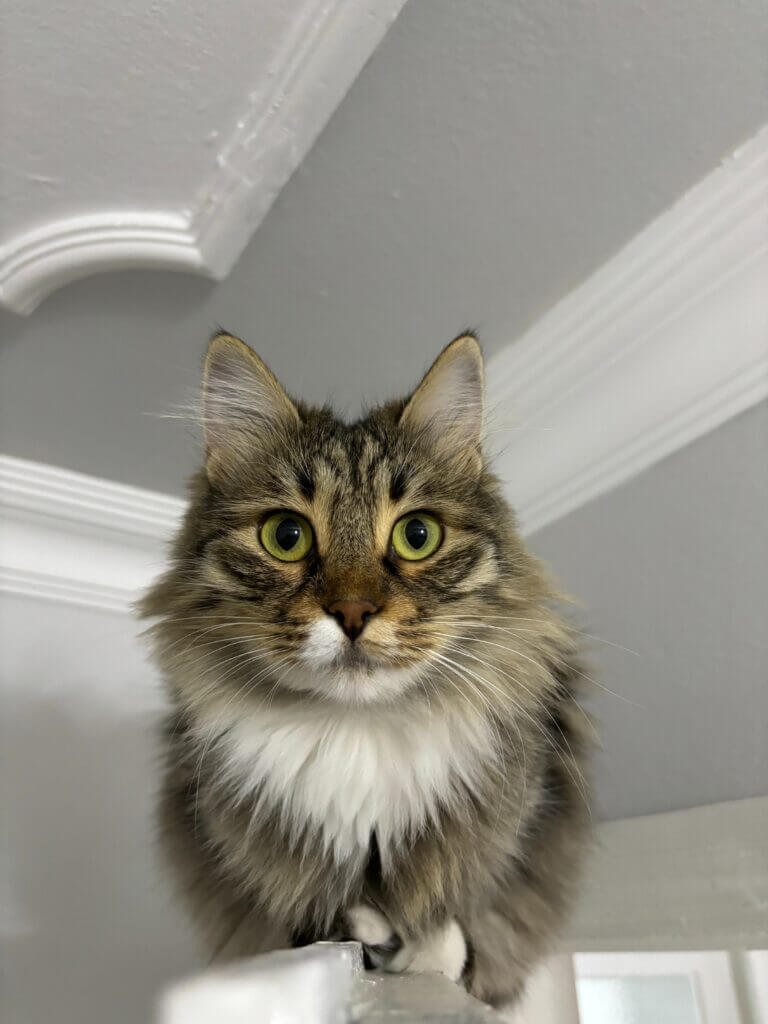So, you’re thinking about adding a furry friend to your household, but you’re not quite sure how to go about it? Don’t fret, because we’ve got some great tips to help you smoothly introduce a new cat to your existing ones. Starting off on the right paw is crucial to creating a harmonious environment for everyone involved. From setting up a safe space for your new kitty to gradually introducing them to the resident cats, we’ll guide you through the process step-by-step, ensuring a seamless integration into your fur family.
Preparation
Preparing for the introduction of a new cat into your household is essential to ensure a smooth transition and avoid unnecessary conflicts. By gathering the necessary supplies, creating a safe space, and consulting a veterinarian, you can set the stage for a successful introduction.
Gathering supplies
Before bringing your new cat home, make sure you have all the necessary supplies to provide them with a comfortable living environment. These supplies may include a litter box, litter, food and water bowls, toys, scratching posts, and a cat bed. Having everything ready will minimize stress for both you and your new furry friend.
Creating a safe space
Creating a safe space for your new cat is crucial during the initial stages of introduction. Set up a quiet room where they can have their own space away from other pets or household activities. This room should include all the essential supplies mentioned earlier and provide a peaceful environment where your new cat can adjust at their own pace.
Consulting a veterinarian
Before introducing your new cat to your existing pets, it’s essential to consult a veterinarian. A vet can assess the health of your new cat and provide any necessary vaccinations or treatments. They can also offer valuable advice on the introduction process specific to your pets and household dynamic.
Introducing scents
Introducing scents is a vital step in the process of introducing a new cat to existing pets. By exchanging scents and using pheromone sprays or diffusers, you can help familiarize your pets with each other’s presence.
Scent swapping
Scent swapping involves exchanging scents between your new cat and existing pets. You can do this by gently rubbing a soft cloth or towel on one pet and then allowing the other pet to smell it. This process helps them become familiar with each other’s scent, which can reduce anxiety and create a sense of familiarity before they physically meet.
Using pheromone sprays or diffusers
Pheromone sprays or diffusers can also aid in reducing tension and promoting a calm environment during the introduction process. These products mimic the natural pheromones that cats release when they feel safe and secure. By using them in the space where you plan to introduce your pets, you can help create a more relaxed atmosphere, facilitating a peaceful introduction.
Visual exposure
Visual exposure is another important aspect of introducing a new cat to your household. By gradually exposing your pets to each other’s presence, you can help them become accustomed to seeing one another without direct physical contact.
Using a baby gate
Using a baby gate can allow your pets to see and observe each other from a safe distance. This physical barrier provides a sense of security while still allowing them to become familiar with each other’s appearance and behaviors. Over time, as they become more comfortable, you can gradually increase the interaction between them.
Interactive play sessions with toys
Interactive play sessions with toys can help divert your pets’ attention away from any potential anxiety or aggression during the introduction process. Engaging them in interactive play individually, on either side of the baby gate, can promote positive associations and a shared sense of fun. Ensure the toys are safe and enjoyable for both pets, providing an opportunity for them to bond over a common activity.
Feeding rituals
Feeding rituals can play a significant role in introducing a new cat to your household. Implementing separate feeding areas and gradually introducing them to each other’s food can establish positive associations and reduce the likelihood of food-related conflicts.
Separate feeding areas
Providing separate feeding areas for your new cat and existing pets can help prevent food-related disputes and reduce stress. Each pet should have their own designated feeding space, with enough distance between them to ensure a sense of personal territory. This separation allows each pet to eat their meal undisturbed and minimizes the likelihood of aggression.
Gradual food introductions
Gradually introducing your pets to each other’s food can help them become acclimated to each other’s scent and presence. Start by placing their food bowls on either side of a closed door, allowing them to associate positive experiences, such as mealtime, with each other’s scent. Over time, and with supervision, you can progress to having them eat in closer proximity until they are comfortable eating side by side.

Supervised interactions
Supervised interactions are crucial when introducing a new cat to your existing pets. Gradual and controlled exposure allows you to monitor their behavior and intervene if necessary, facilitating a safe and positive introduction.
Brief supervised visits
Begin by allowing short, supervised visits between your new cat and existing pets. Keep these initial interactions short to minimize the risk of tension or aggression. During these visits, observe their body language and behavior closely, looking for signs of stress or discomfort. If any negative behavior occurs, separate them immediately and try again later, adjusting the pace as needed.
Gradually increasing time together
As your pets demonstrate more positive interactions, gradually extend the duration of their supervised visits. Allow them to spend more time together in a controlled environment, always ready to intervene if necessary. Ensure that the interactions remain positive and rewarding for both pets, gradually increasing their comfort level and building a foundation of trust.
Positive reinforcement
Positive reinforcement is a powerful tool when introducing a new cat to your household. By rewarding calm behavior and using treats or play as incentives, you can reinforce positive associations and encourage harmonious interactions between your pets.
Rewarding calm behavior
Rewarding calm behavior can help create a positive atmosphere during the introduction process. Whenever you notice your pets exhibiting calm and relaxed behavior around each other, provide verbal praise, gentle petting, or a small treat. This positive reinforcement reinforces the idea that being in each other’s presence is rewarding and can help them form positive associations with one another.
Using treats or play as incentives
Utilizing treats or play as incentives can help redirect potential tension or anxiety and create positive associations with each other. During supervised interactions or training sessions, offer treats or engage them in interactive play when they exhibit calm and friendly behavior. This technique can help them associate positive experiences, like receiving treats or enjoying playtime, with the presence of the other pet.

Litter box arrangements
Proper litter box arrangements are essential when introducing a new cat to your household. Multiple litter boxes placed in separate areas can prevent territorial disputes and provide each pet with their own designated space.
Multiple litter boxes
Providing multiple litter boxes is crucial to avoid conflicts over territory and promote a sense of security for each pet. Ideally, there should be at least one litter box per cat, plus an additional one for good measure. Place these litter boxes in separate areas of the house to ensure each pet has easy access to their designated spot and minimize the stress of potential confrontation near the litter box.
Keeping litter boxes in separate areas
Keeping the litter boxes in separate areas helps to establish personal territories for your pets. This separation reduces the risk of inappropriate elimination and territorial marking while allowing each pet to feel more comfortable and secure. Make sure to locate the litter boxes in quiet and easily accessible areas so that your cats can use them undisturbed.
Establishing routines
Establishing routines plays a crucial role in successfully integrating a new cat into your household. Setting regular feeding times, consistent play and exercise schedules, and maintaining stability can help your pets adjust more easily to each other and their new environment.
Regular feeding times
Feeding your pets at consistent times each day can help establish a routine and reduce potential conflicts over mealtime. Set a schedule for feeding and stick to it, ensuring that each pet has their own designated feeding area. A regular feeding routine can help reduce stress and create a peaceful environment during mealtime for all pets involved.
Consistent play and exercise schedules
Engaging your pets in regular play and exercise sessions can help them burn off excess energy and reduce tension during the introduction process. Set aside dedicated time each day for interactive play sessions, using toys that your pets enjoy. Consistency in these activities allows your cats to establish a positive bond and provides an outlet for any built-up stress or aggression.
Monitoring behavior
Monitoring your pets’ behavior throughout the introduction process is crucial for a successful integration. Observing body language and addressing signs of aggression or anxiety promptly can help you identify and manage any potential issues before they escalate.
Observing body language
Closely observe your pets’ body language during interactions and monitor for any signs of discomfort, aggression, or anxiety. Look for flattened ears, hissing, growling, raised fur, or defensive postures, which may indicate tension or distress. By recognizing these signs early on, you can intervene if necessary and ensure the well-being of all pets involved.
Addressing signs of aggression or anxiety
If you notice any signs of aggression or anxiety, it’s crucial to address them promptly and appropriately. Separate the involved pets and give them some time to calm down. Reevaluate the introduction process and consider slowing down the pace if necessary. In more severe cases, it may be necessary to seek professional guidance from a feline behaviorist or veterinarian.
Seeking professional guidance
In some cases, seeking professional guidance during the introduction process can be beneficial. Feline behaviorists and veterinarians have extensive knowledge and experience in managing cat-to-cat introductions and can provide personalized advice tailored to your specific situation.
Consulting a feline behaviorist
A feline behaviorist can offer valuable insights and guidance on how to introduce your new cat to your household. They can analyze the behavior of both your new cat and existing pets, identify any potential issues, and provide practical strategies to address them. With their expertise, a feline behaviorist can help you navigate the introduction process more effectively.
Asking for advice from a veterinarian
Your veterinarian also plays a crucial role during the introduction process. If you encounter any significant challenges or concerns, consulting your vet can provide you with professional advice and potential medical solutions. They can evaluate the health of your pets, recommend appropriate behavior modification techniques, and ensure the overall well-being of all animals involved.
Remember, introducing a new cat to your household requires patience, understanding, and careful planning. By following these steps and paying attention to your pets’ behavior and well-being, you can create a harmonious and welcoming environment for all members of your furry family.


